More important were crafts for the needs of both their fellow Jews and the Christian population (fur making, tanning, tailoring).[34]. Jews also took up socialism, forming the Bund labor union which supported assimilation and the rights of labor. [145] Ultimately this proved impossible and illusory, as it lacked both general Jewish and international support. The Germans selected Adam Czerniakow to take charge of the Jewish Council called Judenrat made up of 24 Jewish men ordered to organize Jewish labor battalions as well as Jewish Ghetto Police which would be responsible for maintaining order within the Ghetto walls. Former senior officials and notable members of the Polish community were arrested and exiled together with their families. The worldwide Jewish population at that time was estimated at 1.2 million. The Polish general Stefan Czarniecki defeated the Swedes in 1660. During World War II there was a nearly complete genocidal destruction of the Polish Jewish community by Nazi Germany and its collaborators of various nationalities,[5] during the German occupation of Poland between 1939 and 1945, called the Holocaust. On 22 July 1942, the mass deportation of the Warsaw Ghetto inhabitants began. Since the Nazi terror reigned throughout the Aryan districts, the chances of remaining successfully hidden depended on a fluent knowledge of the language and on having close ties with the community. [167] Most economic activity became subject to central planning and the NKVD restrictions. The territories which included the great bulk of the Jewish population was transferred to Russia, and thus they became subjects of that empire, although in the first half of the 19th century some semblance of a vastly smaller Polish state was preserved, especially in the form of the Congress Poland (18151831). During the time from the rule of Sigismund I the Old until the Holocaust, Poland would be at the center of Jewish religious life. The overcrowding, dirt, lice, lethal epidemics such as typhoid and hunger all resulted in countless deaths. [44] Under the rule of Wadysaw II, Polish Jews had increased in numbers and attained prosperity. Charles X of Sweden, at the head of his victorious army, overran the cities of Krakw and Warsaw. The Pale of Settlement (Russian: , chert osdlosti, Yiddish: -, tkhum-ha-moyshv, Hebrew: , tm ha-moshv) was the term given to a region of Imperial Russia in which permanent residency by Jews was allowed and beyond which Jewish permanent residency was generally prohibited. Only a few of them survived. While the German policy towards Jews was ruthless and criminal, their policy towards Christian Poles who helped Jews was very much the same. [39] There were, however, among the reigning princes some determined protectors of the Jewish inhabitants, who considered the presence of the latter most desirable as far as the economic development of the country was concerned. [176][177] Following Jan Karski's report written in 1940, historian Norman Davies claimed that among the informers and collaborators, the percentage of Jews was striking; likewise, General Wadysaw Sikorski estimated that 30% of them identified with the communists whilst engaging in provocations; they prepared lists of Polish "class enemies". PolandPassport.com | FAQs | Becoming a Polish Citizen Polish Citizenship By Descent - Emigration law office [citation needed]. Only 30% of the money raised by the Rabbinate served Jewish causes, the rest went to the Crown for protection. . [citation needed]. To obtain the confirmation of possession or loss of Polish citizenship, you should apply to the provincial governor through a consul at a Polish consular office competent for your place of residence. Some 166,000 people lost their lives in the 1944 Warsaw Uprising, including perhaps as many as 17,000 Polish Jews who had either fought with the AK or had been discovered in hiding (see: Krzysztof Kamil Baczyski and Stanisaw Aronson). The estimates of Polish Jews before the war vary from slightly under 3 million to almost 3.5 million (the last nationwide census was conducted in 1931). On 17 January 1945, the Soviet Army entered a destroyed and nearly uninhabited Warsaw. High-ranking members of the Jewish community estimate there are now 30,000 Jews among Poland's 38 million citizens, up from 10,000 in 2007and say there could be many more still unaware of. In the 1881 outbreak, pogroms were primarily limited to Russia, although in a riot in Warsaw two Jews were killed, 24 others were wounded, women were raped and over two million rubles worth of property was destroyed. Jews were robbed and handed over to the Germans by "szmalcowniks" (the 'shmalts' people: from shmalts or szmalec, Yiddish and Polish for 'grease'). [279] Many left for the West because they did not want to live under a Communist regime. With the decision of Nazi Germany to begin the Final Solution, the destruction of the Jews of Europe, Aktion Reinhard began in 1942, with the opening of the extermination camps of Beec, Sobibr, and Treblinka, followed by Auschwitz-Birkenau where people were killed in gas chambers and mass executions (death wall). In Warsaw, important centers of Judaic scholarship, such the Main Judaic Library and the Institute of Judaic Studies were located, along with numerous Talmudic Schools (Jeszybots), religious centers and synagogues, many of which were of high architectural quality. A countrywide Jewish Religious Community, led by Dawid Kahane, who served as chief rabbi of the Polish Armed Forces, functioned between 1945 and 1948 until it was absorbed by the CKP. Some of them were Jewish themselves, and their prosecution after the war created an ethical dilemma. "[179], The issue of Jewish collaboration with the Soviet occupation remains controversial. Reclaiming Polish Citizenship - Urban Jewish Heritage | Presence and Thus his security chief, Mieczysaw Moczar, used the situation as a pretext to launch an antisemitic press campaign (although the expression "Zionist" was officially used). [190] Numerous restrictions and prohibitions targeting Jews were introduced and brutally enforced. Does Poland love Jews? Restitution law implies no - opinion Some Jewish historians have recounted that the word Poland is pronounced as Polania or Polin in Hebrew, and as transliterated into Hebrew, these names for Poland were interpreted as "good omens" because Polania can be broken down into three Hebrew words: po ("here"), lan ("dwells"), ya ("God"), and Polin into two words of: po ("here") lin ("[you should] dwell"). [244], The number of Polish Jews who survived the Holocaust is difficult to ascertain. Many Jews were found alive in the ruins of the former Warsaw Ghetto during the 1944 general Warsaw Uprising when the Poles themselves rose up against the Germans. General Anders decided not to prosecute the deserters and emphasized that the Jewish soldiers who remained in the Force fought bravely. According to the Moses Schorr Centre, there are 100,000 Jews living in Poland who don't actively practice Judaism and do not list "Jewish" as their nationality. To discourage Poles from giving shelter to Jews, the Germans often searched houses and introduced ruthless penalties. How Poland's Jewish Community Is Emerging from the Shadow of its - Time Confirmation of Polish citizenship occurs after the Polish government issues a decision on your behalf. [304] There are likely more people of Jewish ancestry living in Poland but who do not actively identify as Jewish. [268], Many of the properties that were previously owned or by Jews were taken over by others during the war. [219], Hiding in a Christian society to which the Jews were only partially assimilated was a daunting task. The process of seeking Polish citizenship involves the collection of many documents through digital archives, dusted-off family documents, and municipal registries. The concept of "Judeo-communism" was reinforced during the period of the Soviet occupation (see ydokomuna). [121] In 1929, about a third of artisans and home workers and a majority of shopkeepers were Jewish. [25], In the post-war period, many of the approximately 200,000 Jewish survivors registered at the Central Committee of Polish Jews or CKP (of whom 136,000 arrived from the Soviet Union)[25][26][27][pageneeded] left the Polish Peoples Republic for the nascent State of Israel or the Americas. [284] After 1956, during the process of destalinisation in the People's Republic under Wadysaw Gomuka, some Jewish officials from Urzd Bezpieczestwa including Roman Romkowski, Jacek Raski, and Anatol Fejgin, were prosecuted and sentenced to prison terms for "power abuses" including the torture of Polish anti-fascists including Witold Pilecki among others. Between October 1939 and July 1942 a system of ghettos was imposed for the confinement of Jews. On the Edge of Destruction: Jews of Poland Between the Two World Wars. Exceptions are recorded, however, where Jewish youth sought secular instruction in the European universities. The state-sponsored "anti-Zionist" campaign resulted in the removal of Jews from the Polish United Worker's Party and from teaching positions in schools and universities. The Jewish Ghetto Police were ordered to escort the ghetto inhabitants to the Umschlagplatz train station. [194] By the end of 1941 all Jews in German-occupied Poland, except the children, had to wear an identifying badge with a blue Star of David. Wilno (now in Lithuania) had a Jewish community of nearly 100,000, about 45% of the city's total. Candelabras, chandeliers, a menorah and a ner tamid were found and can now be seen at the Auschwitz Jewish Center. [158] With the coming of the war, Jewish and Polish citizens of Warsaw jointly defended the city, putting their differences aside. We work with clients from all over the world. [90] According to the Polish national census of 1921, there were 2,845,364 Jews living in the Second Polish Republic; but, by late 1938 that number had grown by over 16% to approximately 3,310,000. [citation needed] Under pressure from Soviet-installed communist authorities, the Bund's leaders 'voluntarily' disbanded the party in 19481949 against the opposition of many activists. He inflicted heavy punishment for the desecration of Jewish cemeteries. Those deemed too weak to work were murdered at Majdanek. Under his reign, streams of Jewish immigrants headed east to Poland and Jewish settlements are first mentioned as existing in Lvov (1356), Sandomierz (1367), and Kazimierz near Krakw (1386). Since the fall of communist Europe in 1989, most countries in the former Soviet bloc have taken steps to provide restitution and compensation to their pre-war Jewish citizens. The antisemitic rejection of Jews, whether for religious or racial reasons, caused estrangement and growing tensions between Jews and Poles. At the same time, approximately 110,000 Poles had been forcibly evicted from the area. The growth of Talmudic scholarship in Poland was coincident with the greater prosperity of the Polish Jews; and because of their communal autonomy educational development was wholly one-sided and along Talmudic lines. [83] In the Lww (Lviv) pogrom, which occurred in 1918 during the PolishUkrainian War of independence a day after the Poles captured Lviv from the Sich Riflemen the report concluded 64 Jews had been killed (other accounts put the number at 72). Just found out through a lawyer that I am eligible for Polish citizenship. Polish Jews generally were less influenced by Haskalah, rather focusing on a strong continuation of their religious lives based on Halakha ("rabbis's law") following primarily Orthodox Judaism, Hasidic Judaism, and also adapting to the new Religious Zionism of the Mizrachi movement later in the 19th century. This made it very attractive for Jewish communities to pick up and move to Poland. [60] The Jewish dress resembled that of their Polish neighbor. [16][17], In 1939, at the start of World War II, Poland was partitioned between Nazi Germany and the Soviet Union (see MolotovRibbentrop Pact). 'This well-researched and innovative volume provides a vivid account of the attempts to revive Jewish life in Poland . These include birth. Many of them survived thanks to the contacts they managed to establish with Poles outside the ghetto. [34] Jews enjoyed undisturbed peace and prosperity in the many principalities into which the country was then divided; they formed the middle class in a country where the general population consisted of landlords (developing into szlachta, the unique Polish nobility) and peasants, and they were instrumental in promoting the commercial interests of the land. According to the Polish Moses Schorr Centre and other Polish sources, however, this may represent an undercount of the actual number of Jews living in Poland, since many are not religious. Some of the survivors of 1943 Warsaw Ghetto Uprising, still held in camps at or near Warsaw, were freed during 1944 Warsaw Uprising, led by the Polish resistance movement Armia Krajowa, and immediately joined Polish fighters. [13] After the Partitions of Poland in 1795 and the destruction of Poland as a sovereign state, Polish Jews became subject to the laws of the partitioning powers, including the increasingly antisemitic Russian Empire,[14] as well as Austria-Hungary and Kingdom of Prussia (later a part of the German Empire). Official Russian policy would eventually prove to be substantially harsher to the Jews than that under independent Polish rule. Their religious beliefs spanned the range from Orthodox Hasidic Judaism to Liberal Judaism. The fighting in isolated pockets of resistance lasted for several days, but the defence was broken almost instantly. Anti-Jewish riots spread across Poland. Eleven independent political Jewish parties, of which eight were legal, existed until their dissolution during 194950. Columbia University Press, 1993, This page was last edited on 4 April 2023, at 14:54. [84][85] Many Jewish leaders who survived the liquidation continued underground work outside the ghetto. [111] The Jewish industries were negatively affected by the development of mass production and the advent of department stores offering ready-made products. In 1914, the German Zionist Max Bodenheimer founded the short-lived German Committee for Freeing of Russian Jews, with the goal of establishing a buffer state (Pufferstaat) within the Jewish Pale of Settlement, composed of the former Polish provinces annexed by Russia, being de facto protectorate of the German Empire that would free Jews in the region from Russian oppression. [286][287], The vast majority of the 40,000 Jews in Poland by the late 1960s were completely assimilated into the broader society. [249] Over 150,000 of them were repatriated or expelled back to new communist Poland along with the Jewish men conscripted to the Red Army from Kresy in 19401941. In the search for the information on the ancestors born in Poland might be helpful Jewish Historical Insitute based in Warsaw which is a . [261][bettersourceneeded] Nine alleged participants of the pogrom were sentenced to death; three were given lengthy prison sentences. [263], Several causes led to the anti-Jewish violence of 19441947. The Warsaw Ghetto was the largest in all of World War II, with 380,000 people crammed into an area of 1.3sqmi (3.4km2). Indeed, with the expulsion of the Jews from Spain, Poland became the recognized haven for exiles from Western Europe; and the resulting accession to the ranks of Polish Jewry made it the cultural and spiritual center of the Jewish people. [140] The Polish government condemned wanton violence against the Jewish minority, fearing international repercussions, but shared the view that the Jewish minority hindered Poland's development; in January 1937 Foreign Minister Jzef Beck declared that Poland could house 500,000 Jews, and hoped that over the next 30 years 80,000-100,000 Jews a year would leave Poland. Another athlete, Alojzy Ehrlich, won several medals in the table-tennis tournaments. [105] Economic instability was mirrored by anti-Jewish sentiment in the press; discrimination, exclusion, and violence at the universities; and the appearance of "anti-Jewish squads" associated with some of the right-wing political parties. If you have Polish (including Polish-Jewish) ancestry, you probably already are a Polish citizen and qualify for a Polish Passport which is the same as an EU passport. . According to Irgun activists, the Polish state supplied the organisation with 25,000 rifles, additional material and weapons, and by summer 1939 Irgun's Warsaw warehouses held 5,000 rifles and 1,000 machine guns. Jews owned land and real estate, participated in retail and manufacturing and in the export industry. While there, 2,297 Jewish soldiers deserted en masse. To obtain Polish citizenship, a foreigner must remain married to a Polish citizen for a period of at least 3 years and have stayed in Poland legally and uninterruptedly for at least 2 years under a permanent residence permit, and their knowledge of Polish language must be documented. [161][167], Under the Soviet policy, ethnic Poles were dismissed and denied access to positions in the civil service. As soon as the disturbances had ceased, the Jews began to return and to rebuild their destroyed homes; and while it is true that the Jewish population of Poland had decreased, it still was more numerous than that of the Jewish colonies in Western Europe. Eastern European Dating Culture Dos and Don'ts January 31, 2023. The learned rabbis became not merely expounders of the Law, but also spiritual advisers, teachers, judges, and legislators; and their authority compelled the communal leaders to make themselves familiar with the abstruse questions of Jewish law.

















